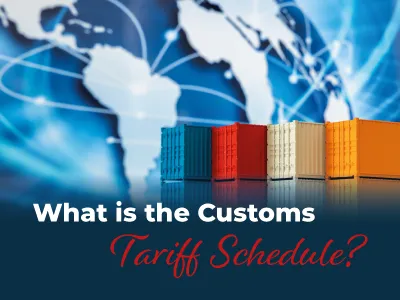
The Customs Tariff Schedule is one of the main tools used in foreign economy and trade policy. The first customs Tariff Schedule came into force on January 1, 1958. At the end of each year, it is updated by the Council of Ministers for use in the following year. The World Customs Organization has developed a standard known as the goods definition and coding system to facilitate the flow of international trade. The countries that are members of this organization have determined their own rules to comply with these standards. Turkish Customs Tariff Schedule is such an indexing system. The classification of products and goods purchased or sold in all foreign trade processes in which Türkiye is involved is made according to this system.
Another critical issue in customs is the Harmonized Goods Definition and Coding System. While the codes given to the goods here are six digits, in the Turkish Customs Tariff Schedule, they are 12 digits. The first six digits of these 12 digits consist of the numbers given to the relevant product in the Harmonized Goods Description and Coding System. In short, the essence of the tariff schedule used in Türkiye is this system created by the World Customs Organization.
Where is the Customs Tariff Schedule used?
The customs Tariff Schedule is determined according to the characteristics of the goods to be classified. In this context, every two digits of the 12-digit codes are chosen to define a different feature, and the general features are shown with the first two digits, known as the chapter number. Each subsequent two numbers indicate a more specific attribute. These numbers can be listed as follows according to their technical meanings:
- First Two Digits: Chapter Number
- Second Two Digits: Position Number
- Third Two Digits: Subposition Number
- Fourth Two Digits: Combined Nomenclature Number
- Fifth Two Digits: National Sub-Expansion Number
- Sixth Two Digits: Statistics Number
In addition, the incentives provided by the Customs Tariff Schedule in the field of customs are also valid for people who want to sell products abroad over the internet.
How to Query the Customs Tariff Schedule?
You can inquire about the Customs Tariff Schedule using a tool on the website of the Ministry of Commerce. Through this tool, known as the Tariff Search Engine, you can query by Customs Tariff Statistics Position (GTİP) or by word. However, it is more recommended to inquire about the GTIP code. Because this classification method is very detailed, you may have difficulty finding the desired information when you search by word. Let's give a brief example of this situation through the Vehicle Customs Tariff Schedule.
While the Customs Tariff Schedule 87.02 position code refers to motor vehicles carrying ten or more people, the Customs Tariff Schedule 87.03 code covers passenger vehicles. For this reason, pointing out many different product groups with just one number makes word queries more complex.
How are Customs Tariff Tax Rates Calculated?
The Customs Tariff Schedule is also an essential system in terms of tax rates. Because this system can quickly determine the customs tax rate for which product group. The main determining factor in this system is the statistical position.
Of course, tariff schedule classification is not the only factor considered when determining the tax rates of products. The origin and customs value of the goods are also essential in determining the customs duty.
 Back
Back







